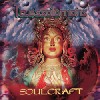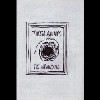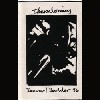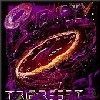|
|
 |
|
|
 |
 |
 |
|
I have been putting off writing this. Not because I don't want to, but rather because Larry Thrasher is so important and influential that I just didn't know where to
start. Larry is an amazing person, not only for his contributions to music, but also for his actions, philosophies and friendship. He was there with Kim at the beginning of Silent. And I believe
his contributions as a silent partner during the early days of the label were influential.
Larry Thrasher grew up in Kentucky where he studied piano and learned to play the guitar. After formally
studying baroque guitar in the mid 70's he found himself playing in the Australian punk/ska band HEROES replacing Ray Fitzpatrick (famed bassist for Ike & Tina Turner and Taj Mahal) on bass. In 1984 Larry
moved to San Francisco where he met David James (of Spearhead fame) and over the next 4 years recorded a number of noise albums under the name Big Swab which used prepared bass and guitar, found objects, tabla
percussion, tape manipulations and noise. It was this same year that Larry co-founded Thessalonians with Kim Cascone and David James. After releasing a number of ambient noise releases, Kim approached
Larry with the idea of starting a label. Silent Records was launched and after releasing 3 cassettes and 1 full-length LP, the original Thessalonians lineup dissolved in 1886. During this time Larry was
working with San Francisco based psychedelic lightshow "Warm Light" and played in various bands including The Bubbles and Whack and Dangle with David James. It was also during this time that Larry
started studying Indian tabla drums with the renowned master Swapan Chadhuri and began his travels in India where he collected rare instruments and studied different folk styles of music in Maharashtra.
In
1991 Thessalonians regrouped. The lineup included Kim Cascone, Larry Thrasher, David James, Paul Nyrinck and Don Falcone. They released the amazing "Soulcraft" CD on Silent which, along with
cover art by Nick Philip, kick started Silent's branding and future direction. This same year Larry started Jhopdi Studios which specialized in Digital Editing for various Silent Records artists.
In
1993, while mastering and editing "Splinter Test" for Caroline Records, Larry met Genesis P-Orridge. He started performing live with Psychic TV, playing tablas and samples and joined the band with
the release of "A Hollow Cost". Eleven releases later Larry finds that he has achieved international status under the various incarnations (Psychic TV, Thee Splinter Test and Thee Majesty). Larry
continues to collaborate with Genesis on these sound collage/spoken work projects.
Larry also performs live with the LA based acid jazz band Om Boyz and is working on multiple projects, including XX (minimal
noise), The Numina (hard techno), and Splooge (180 bpm death-noise). His main focus now is with his alternative qawwali band Thrasher Qawwal. Qawwali music is the folk music of North India and
Pakistan. It has roots in Sufism and Persian poetry and seeks to attain blissful and ecstatic states between the performers and audience. Thrasher Qawwal is the musical culmination of Larry's training
under Pandit Swapan Chaudhuri (tabla) and Pandit Jasraj (vocal techniques).
Besides the mind boggling list of musical projects Larry is involved in, he is building a recording studio in India and has started
a new record label (Del Ruba Records) with his partner Chandra Shukla. Please take a moment to read the interview with Larry below as this short bio only begins to grasp at the depth of Larry Thrasher. I
want to thank Larry for his generous outpouring of support for the Silent site as well as the contributions he has made and his time.
|
 |
 |
|
Larry Thrasher Discography
Full-Lengths:
Big Swab - One, In the Red, 1984
Big Swab - Two, In the Red, 1985
Thrasher - Nocturne, In the Red, 1986
Thrasher - Frozen In Time, In the Red, 1986
Big Swab - Three, In the Red, 1986
PGR/Thessalonians - The Black Field, Silent Records, 1987
Thessalonians - Denver/Boulder '86 cassette, Silent Records, 1987
Thessalonians - untitled cassette, Silent Records, 1988
Thessalonians - The Unwinding cassette, Silent Records, 1990
Thessalonians - Soulcraft, Silent Records, 1991
Psychic TV - Trip Reset, Cleopatra, 1994
Psychic TV - Cathedral Engine, Dossier Records, 1994
Psychic TV - Electric Newspaper Vol 1, Dossier Records, 1994
Psychic TV - Electric Newspaper Vol 2, Dossier Records, 1995
Psychic TV - Electric Newspaper Vol 3, Dossier Records, 1995
Psychic TV - Cold Blue Torch, Cleopatra, 1995
dj Cheb i Sabbah wa Mektoub/Tulku - Life Force Kupuri, Triloka Records, 1995
Genesis
P-Orridge W/Splinter Test - Thee Fractured Garden, Invisible Records, 1996
GPO and Larry Thrasher - Breath, Dossier Records, 1996
Splinter Test - Spatial Memories, Dossier Records, 1997
GPO and Larry Thrasher - A Hollow Cost, Visionary Records, 1996
Splinter Test - Electric Newspaper Vol 4, Invisble Records, 1997
dj Cheb i Sabbah - Shri Durga, 6 Degrees Records, 1999 (Baba Larry
Ji aka Larry Thrasher engineered the album and plays on "Radhe Krishna")
dj Cheb i Sabbah - Mahamaya remixes of Shri Durga, 6 Degrees Records, 2000
Thrasher Qawwal - Geets from the Archives Vol. 1, Del Ruba, ?
Tracks on other CDs:
Thessalonians - on Altered States, U.P.D./Japan, 1991
Psychic TV - "A Star Too Far (Lullaby For Syd)" on Space Daze, Cleopatra, 1994
Thessalonians - on 110 Below, New Electronica, 1995
Psychic TV - "Set The Controls For The Heart Of The Sun" on Saucer Full of Pink, Cleopatra, 1995
Psychic TV - "Mindfeeled"
(co-produced by Larry Thrasher) on Trance Atlantic, BMG, 1995
Thessalonians - "E-Space" on From Here to Tranquiltity Vol 5, Silent Records, 1996
Thessalonians - "Be Here Now (Red Devil Mix)" on En-Trance, EFA, 1996
Splinter Test - "A Hollow Cost (excerpt)" on Invisible Route 666, Invisible, 1995
Splinter Test -
"thee decaying ov family l-ov-e" on In Dust We Trust, Invisible, 1997
Splinter Test - "Humanity is the Virus (Martin Atkins Mix)", Invisible, 1997
Splinter Test - "family l-ov-e" on Drug Test 2, Invisible, 1997
Remixes::
Sheep On Drugs - "WCFM" (remixed by
Larry Thrasher and Jon Weber) on Never Mind the Methadone, Invisible Records, 1997
Produced:
Brian Jonestown Massacre - *Take It From the Man!, Bomp!, 1997
|
|
|
 |
|
|
 |
 |
 |
 |
|
Special silentrecords.net interview with
Larry Thrasher
|
|
|
How did you meet Kim Cascone and get involved with Silent Records?
Kim Cascone (then of Poison Gas Research) had
placed an add looking for people interested in starting a noise band in 1985. David James(later of Spearhead, The Coup, Invisible Inc) and I had been doing recordings with prepared guitars
and tape manipulations - we were living in Oakland at the time. We sent Kim a cassette of some of our sessions, he liked it and invited us over to play. He was living on Alabama street in a
Co-op loft at the time. The first improv session was the three of us. We had great chemistry. Kim was using his 16 second delay, short wave, table top guitar. David and I would just
detune our bass and guitar and pull metal objects out of our bag of found objects, we used feedback also, it was very primitive and immediate. The sound was very ambient, very industrial, and
very beautiful. Later David Gardner(later of Tipsy) joined in - he was using contact mikes on metal screen and prepared instruments. Later Kurt Robertson joined in. He was always playing
little ukulele things, I have no idea where he found them, maybe they were toys - he didn't talk much.
Kim suggested the name "Thessalonians". It seemed more interesting and
elegant than typical names of the times like "Lets Fist-Fuck Daddy". I liked the fact that Thessalonians were early Christians that partied more than St Paul could handle. My family
was happy I finally joined a good Christian band.
At some point Kim asked me if I was interested in starting up an Ambient record label with him. He had the name Silent in mind. I
liked it because my guru from India, Meher Baba, had been silent for 42 years. The first release was a Haters record of pure avalanches of white noise on vinyl. (CD's were
not really that widespread or affordable at the time - we're talking 86). I had received some money from a back injury and so the money for the first Silent release literally came from pain
and suffering. (GX Jupiter Larson of the Haters would like that concept) With the label Kim was really totally running the show. I think I came over a couple of days and helped him get office
stuff set up. I donated an inkjet printer and helped a little with the data base but really could barely get my car over the bridge in those days - I was so broke. Kim was smart enough to get
a business consultant who said that a small label could not support two salaried persons at this point so I became a silent partner in Silent Records. Over the course of the next few
years Kim and Kat(his wife) built up the label making all the decisions.
Meanwhile Thessalonians cut one record called "The Black Field" recorded in Poolside Studio in SF
which was released on Silent in vinyl only. Thessalonians also released several cassettes on Silent. In 1986 the original Thessalonian lineup broke up and we all went our separate ways.
By 1991 I had gotten deep into my tabla studies with Pandit Swapan Chaudhuri and Kim called up and mentioned regrouping Thessalonians. The new lineup was Kim, David James, Paul Nyrinck, Don
Falcone and myself. We also had some other players that sat in from time to time. We did one performance only - warming up for Zakir Hussain and rap artist MC Chaz at a fund raiser in Marin
County - called "Music and Motion" I think we scared the parents but the kids loved it. It was an early look at ambient music using samples, loops and live tabla.
Around that
time I had gotten a Fostex 16 track and a Mackie board and was setting up my own project studio. We tracked Soulcraft mostly in the Blood Mansion (designed by the well known architect Walter
Radcliff) in the Berkeley hills where I was living at the time. That release came out on Silent in 1993. It was a good record - I got a lot of positive feedback from Psychic TV fans (I
joined PTV in 1993). I was told by people in England it was very influential there in the whole Asian underground movement. It heavily featured my tabla playing as well as lots of other
percussion by Doug Murdock and so was coined as "ethno-ambient". Paul Nyrinck did samples and loops. Don Falcone played D50 and keys. David James played guitar, bass and
programmed 707 drum machine. Kim mixed most of it and played samples and short wave. The CD featured an example of some of Nick Philip's best artwork.
Briefly describe the
"ambient" scene during the times you were putting out material for Silent.
Thessalonians were pre-Silent at the beginning. The ambient
scene really seemed to come from several places, several angles. It was influenced by performance art, xerox art, mail art. It was influenced by the occult scenes people were dabbling in at
the time (Anton Levey, TOPY) It was influenced by the Industrial music of TG, SPK, Nurse with Wound, stuff like that. It was influenced by the jazz sounds of Sun Ra, Miles, Don Cherry,
James Blood Ulmer. It was influenced by minimalist visual art as well as minimal modern music like Eno, Moebius, Roedelius, John Hassle. Harry Partch was commonly sighted as a major
influence. Everyone I knew all sighted Stockhausen as a major influence. Pierre Henry, the futurists, the situationists were influences. Kim was heavily into AMM and Wilhelm Reich. I
was coming from my Indian music background - Pannelal Ghosh, Ali Akbar Khan, Swapan Chauduri, Chatur Lal, and Dr Lal Mani Misra. David Gardner listened mostly to Martin Denny. David James
listened to lots of classic P-Funk and tons of out jazz as well as Zorn and Co. David James knows more music than anyone I know.
The early ambient music scene in SF (around 1985) was
ambient noise and industrial ambient (Kim called Thessalonians post-industrial-noise). For us it was beds of gurgling sub tones, bowed glass and string sounds, struck metal sounds,
prepared sounds, random sounds, tape collage, TV/radio samples and noise, broken analogue synths, appliances, delay holds and distorted sounds. None of us really had any money so we
tended to make our own instruments, destroy the ones we had and improvised on the effects using stuff bought at flea markets for 5 bucks. Kim's 16 second delay was the only hot-shit piece of
gear in our group.We didn't have samplers at that point - they were big bucks at that time. Later some were buying Casio and EPS samplers because they were more affordable. We did do a lot of
shows with Big City Orchestra and they were an exception to the no-fi approach common at the time. They were an orchestra of Emu EII's and EIII's.
The ambient music scene in San
Francisco in the mid 80's was dangerous, cutting edge, unpredictable and totally underground. It was full of misfits who were either anti-fashion or fashion-oblivious. Some people were
involved in various art/life style communities and some people seemed dispossessed and needed an outlet that rock and punk didn't provide. There was a strong genuine anarchist
sensibility and an overall distrust for authorities and conventions of all types. The air was ripe with a feeling of collective self-annihilation and chaos. You really had the feeling some of
the people involved were psycho and on the brink of a murder/suicide binge.
How has it changed?
The most noticeable change was
the introduction of new technologies. Samplers started to dominate bands. Cassette culture with xerox art covers started fading away. Digital recording and non-linear editing changed the way
people worked and delivered their music and the graphics. You started hearing 808's, 909's and 303's pretty early on - being used in an ambient context. You would also see people using beats
in an arrhythmic context. Later Trip-ambient developed out of urban and dub sounds. Rave culture really changed things up giving lots of opportunities for new ambient artists to host chill
rooms. I had a few nice chill room experiences when I would play raves with Psychic TV in 92-94. At that time it really seemed as if music had finally freed itself from the shackles of
notes and form. Ambient music ranged from minimal synth sweeps to bare ocean waves. Some ambient music even sounded like new-age muzak using Tibetan bells, digereedoos, dolphins, whales and
indigenous voices.
A huge shift was noticeable when the first ambient sampling CD's starting coming out and the majors started signing ambient artists. It became stylized and
commoditized and had lost a lot of the sense of daring from the early days. You started to hear the same samples, the same filters, the same drum sounds, the same exploited pygmies from one
release to another. Friends would play me new releases and some of it was pretty tired sounding, no verve, no real inspiration, no purpose. I felt ambient music lost it's context and became a
"boys and their toys" circle jerk phenomena where filter sweeps were becoming painfully cliché. Pretty sad, but the important thing was that western music had made a major
transition. Musicians had fused with technologists and the same punk sensibility that inspired the Ramones to do it there way could also apply to people who wanted to induce trance sentiments
and promulgate a wrath soothing culture instead of inciting new wrath.
For me recorded modern ambient music had only a few good years from it's dark and dangerous tattered DIY
beginning to it's spherical, molten, chill environs. Silent was always there representing some of the best of it. The great thing about Ambient music is it can also absorb attributes of
pretty much anything around it - such is it's flexibility and girth. Ambient music has actually always been with us in some form or another sensethe dawn of nature, Silent Records
helped to put it in focus.
What is your favorite Silent release?
That's actually a tough question. I would have to say
prejudicially Thessalonians "The Black Field". It's a beautiful noise album and sounds great on vinyl. I also like Psychic TV Kondole - I always like hearing anything Gen is a part
of. I like Kim Cascone's PGR releases on Silent too. I think Kim is a great talent. Arcane Device, Phauss, are some others that come to mind. I am more noise/concrete minded than most - I
like the minimal noise releases most.
What are you up to now?
In 1998 Gen and I officially killed the name Psychic TV. We
just couldn't compete with the bootleggers and the name was not an effective vehicle for releases. We formed "Thee Majesty" originally with Gen, me, Bachir and Mustapha Attar
(Master Musicians of Jojouka). Later Bryin Dall joined and the core became Gen, Bryin and me. (Bachir and Mustapha will always be members but they are pretty busy with Jojuoka most of the
time.) We tour mostly in Europe because the climate there is more conducive and open to experimental art and expression. Sad comment on America, but really true. They have great festivals,
organizers, professionalism and an open mind that is rare in the states. The US gets Stealth bombers, Europe gets music festivals. We can play to 1200 people easily in Eruope, the last show
we did in NY at the Knitting Factory there was 12 lucky, lovely attendees (who all got to come back stage and share in the beer!).
Thee Majesty is spoken word with ambient noise.
Bryin Dall plays brilliant minimal noise guitar and I play manipulated beds and electronics as well as Indian percussion (dhol, pakawaj, tabla). It is improvisational music. It ranges from
sing-song like ->to silence ->to wall of chaos->to psychologically extracting. We try to go where the moment takes us. We have never done less than a brilliant show. Gen is
absolutely fabulous every show as is Bryin so I can't help but be good with those two. We have lots of live recordings and Gen and Bryin did one CD without me (record label politics at the
time prevented me from appearing - go figure) We are about to do a bunch of shows in England and Germany in June.
My other life is in India. I own land there and I am currently
building a recording studio on the land in Maharashtra. I just got back from there. I perform there solo with pakawaj, tamboura drone, and voice. I sing ghazals in English by Francis
Brabazon, Bhau Kulchuri, Kabir, Hafez, Rumi as well as some of my own lyrics. It is material from my Thrasher Qawwal project that I started in 1987.
I wanted to develop a mode of
expression that would integrate my tabla skills/my spiritual quest/my Kentucky roots. I am just now starting to do releases on my label Del Ruba Records with partner Chandra Shukla. I might,
regretfully, have to sign to a label in India because there is no independent distribution there. India loves Thrasher Qawwal & Thrasher Qawwal loves India. It's my all time
favorite place on the planet to play music. Partly because no matter where you are there is an ambience that weaves into whatever you are doing. There is no escaping the great ambient sounds
and atmospheres of India. It permeates the place and enlivens the senses, the mind and the heart.
Is there anything you would like to add?
Ambient music gave musicians and listeners a new vocabulary and even a new context for music. There is always interesting debate about what the function is of
ambient music. Some equate it to muzak some say it is environmentally interactive, some say it is meditative or trance inducing, some say it is by design incomplete and needs added sounds or
visuals. Others say it is a reaction to the obligatory goose-stepping of beats and techno. Some say it is by design functionless and only that is truly ambient. Ambient music has
allowed people to experiment in the relationship of the central nervous system to sound. Others have attempted to manipulate sound to make a marked effect on the brain waves and moods of the
listener.
Ambient music has allowed industrial noise, natural sounds, human sounds, words, found sounds, destroyed sounds, electronic sounds, circuit bending and all acoustic instruments
to participate from every source and ethnicity. However you see it - ambient music is here to stay, As a recorded phenomena it has been around since the wax cylinder days (Edison's very first
recording was unintentionally ambient) and it will always be with us whether people are capturing it with intent or not recording it at all by just being affected by the ambient sounds that
surround them. Silent Records was the first organized sound delivery vehicle that had the spirit of ambient music behind it from the very start. Sounds came in from all directions, all
continents and all forms of life to Silent Records and Kim and Kat Cascone spun them back out in the true spirit of ambient music.
Please include links to any sites you would like included on the site.
http://www.thrasherqawwal.com
http://www.next-new-way-on.com
http://www.jajouka.com
http://www.arrakis.es/~silmes
|
|
|
|
|














